Tech Talk
Wooden Knobs and Pulls
Jamie Buxton
February 2010
Factory-made metal knobs and pulls have some obvious benefits. They are sturdy, inexpensive, and readily available. I use them for much of my furniture. However, for my finest pieces I often use wood knobs which I make myself. The benefits of doing this are:
• Wood knob designs can be unique, like my furniture designs.
• The wood texture of the knobs matches the wood texture of the furniture.
• I have my choice of many wood species, instead of just the few colors of metal knobs.
• I can integrate the pull into the door or drawer front.
Here are a few wood knobs and pulls to get you thinking.
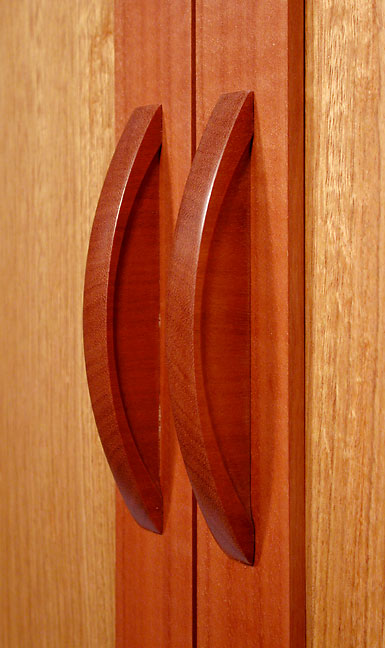


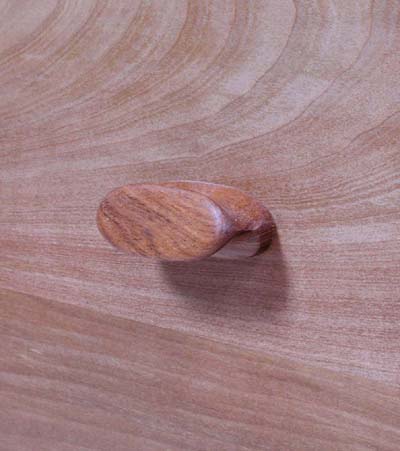
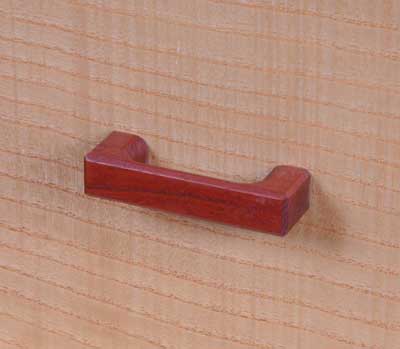
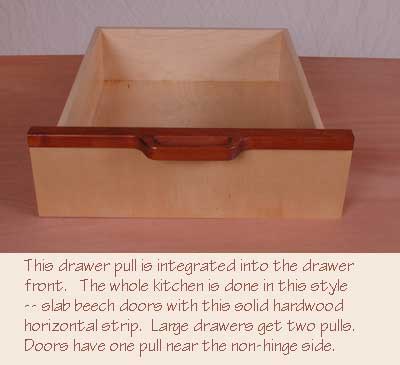
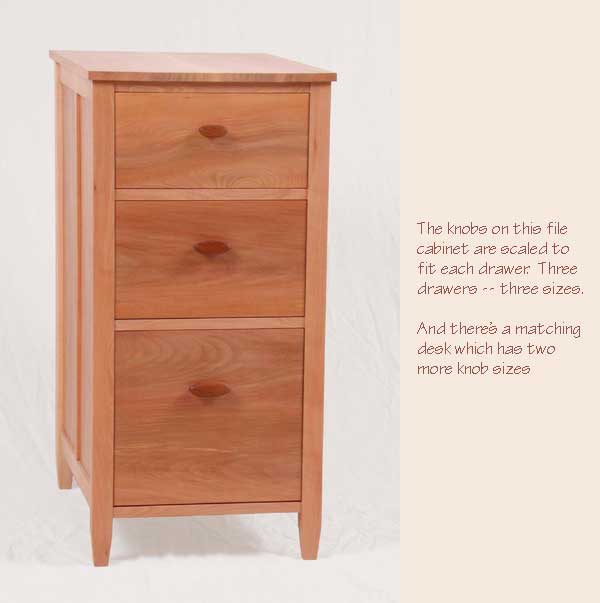
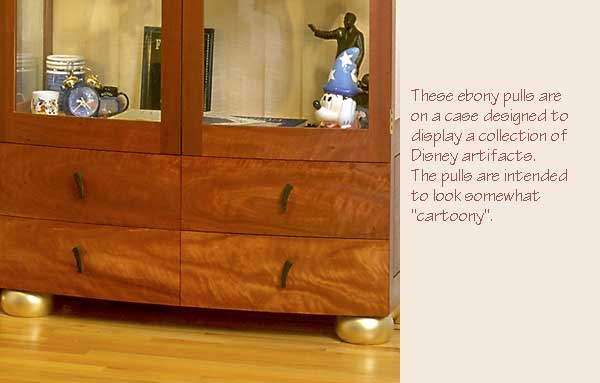
Here's some prototype knobs. This bunch is carved out of styrofoam. Styrofoam carves easily with a knife and a rasp, and comes free as packing material. I've also prototyped with play dough, but you have to be careful about fluids from the material staining unfinished wood.
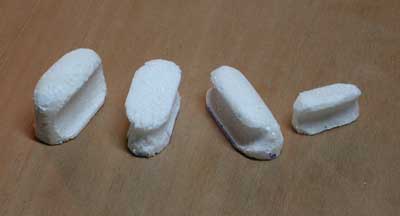
While I'm making prototypes, I'm considering their size and shape, how they'll look, and how they'll fit the fingers. I also may be thinking about how I'm going to make them. I've used a pattern and a pattern-routing bit (the kitchen drawer above). I've used mostly a tablesaw (the pull immediately above the drawer). But most often I use a combination of router, bandsaw, hand files, and sanders (the top four pulls above). It often works out that I use the router first, to make the undercut part which catches the finger tips. I often start with a bigger piece of wood, so I can safely hold on to the blank while I router it. After that, I use the bandsaw to cut away waste and rough-shape the knob. Then I'm down to files and sanders for final shaping and finishing. Sometimes I use what will be the mounting screw to mount the knob to a handle to make it easier to hold while I'm doing the final sanding on it.
To fasten the knobs, I typically drill and tap from the rear for an 8-32 machine screw. I also generally design the knob so that the screw is running across the grain, not parallel to the grain. Machine threads hold quite well in fine-grained hardwood. If you don't believe me, drill and tap an 8-32 thread a half or three-quarters of an inch into any hardwood, and then use a claw hammer to try to pull the screw out. You'll be convinced that this is a sturdy fastening scheme.